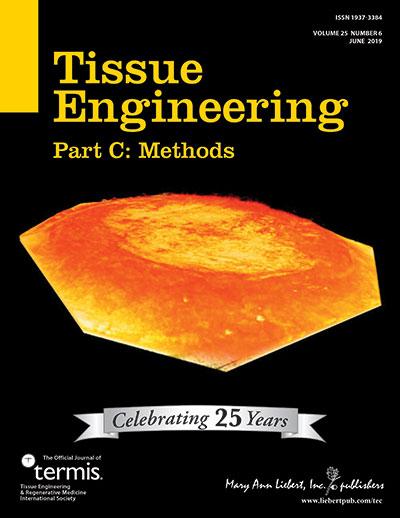
Credit: (c) 2019 Mary Ann Liebert, Inc., publishers
New Rochelle, NY, July 11, 2019-Cells equipped with superparamagnetic iron oxide nanoparticles (SPIOs) can be directed to a specific location by an external magnetic field, which is beneficial for tissue repair. Researchers have now taken the important step of evaluating the safety and efficacy of magnetically labeled mesenchymal stem cells (MSCs) for use in repairing cartilage defects. The study is published in Tissue Engineering, a peer-reviewed journal from Mary Ann Liebert, Inc., publishers. Click here to read the article for free on the Tissue Engineering website through August 11, 2019.
Naosuke Kamei, MD, PhD, Hiroshima University, Hiroshima, Japan, and colleagues present their work in an article titled “In Vitro Safety and Quality of Magnetically Labeled Human Mesenchymal Stem Cells Preparation for Cartilage Repair”. The authors demonstrated the safety of magnetically labeled MSCs based on karyotyping, colony formation assays, and total proliferation, finding only negligible differences after labeling. Chondrocyte differentiation and reactivity to magnetic forces were monitored to evaluate cell quality, and these results indicated that the appropriate titration of SPIO density is advisable to optimize differentiation capacity while maintaining magnetic attraction.
“The dedicated delivery of MSC’s to the defect site is a major step forward in the clinical use of MSC’s for tissue regeneration,” says Tissue Engineering Methods Co-Editor-In-Chief John A. Jansen, DDS, PhD, Professor and Head, Department of Biomaterials, Radboud University Medical Center.
###
About the Journal
Tissue Engineering is an authoritative peer-reviewed journal published monthly online and in print in three parts: Part A, the flagship journal published 24 times per year; Part B: Reviews, published bimonthly, and Part C: Methods, published 12 times per year. Led by Co-Editors-in-Chief Antonios G. Mikos, PhD, Louis Calder Professor at Rice University, Houston, TX, and John P. Fisher, PhD, Fischell Family Distinguished Professor & Department Chair, and Director of the NIH Center for Engineering Complex Tissues at the University of Maryland, the Journal brings together scientific and medical experts in the fields of biomedical engineering, material science, molecular and cellular biology, and genetic engineering. Leadership of Tissue Engineering Parts B (Reviews) and Part C (Methods) is provided by Katja Schenke-Layland, PhD, Eberhard Karls University, Tübingen, Heungsoo Shin, PhD, Hanyang University; and John A. Jansen, DDS, PhD, Radboud University, and Xiumei Wang, PhD, Tsinghua University respectively. Tissue Engineering is the official journal of the Tissue Engineering & Regenerative Medicine International Society (TERMIS). Complete tables of content and a sample issue may be viewed on the Tissue Engineering website.
About the Publisher
Mary Ann Liebert, Inc., publishers is a privately held, fully integrated media company known for establishing authoritative peer-reviewed journals in many promising areas of science and biomedical research, including Stem Cells and Development, Human Gene Therapy, and Advances in Wound Care. Its biotechnology trade magazine, GEN (Genetic Engineering & Biotechnology News), was the first in its field and is today the industry’s most widely read publication worldwide. A complete list of the firm’s 80 journals, books, and newsmagazines is available on the Mary Ann Liebert, Inc., publishers website.
Media Contact
Kathryn Ryan
[email protected]
Original Source
https:/
Related Journal Article
http://dx.



